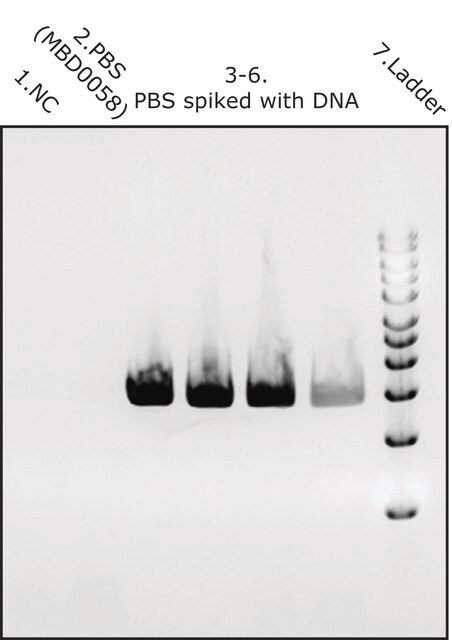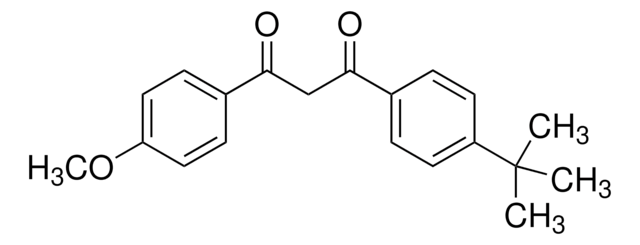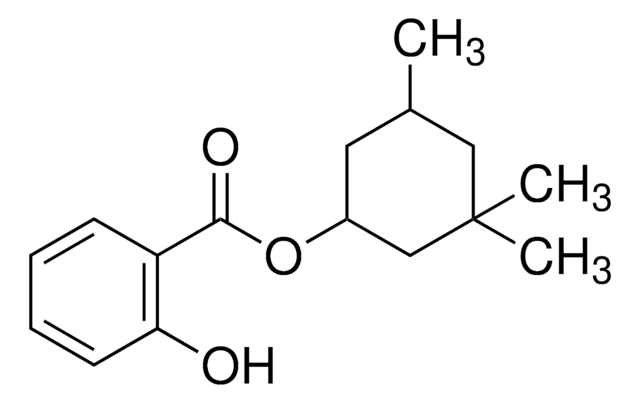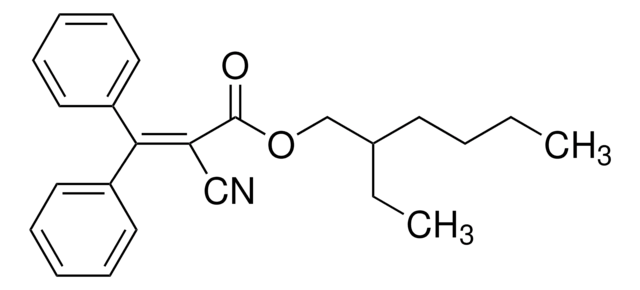PHR1121
2-Phenoxyethanol
Pharmaceutical Secondary Standard; Certified Reference Material
동의어(들):
Ethylene glycol monophenyl ether, Phenylglycol
로그인조직 및 계약 가격 보기
모든 사진(1)
About This Item
Linear Formula:
C6H5OCH2CH2OH
CAS Number:
Molecular Weight:
138.16
Beilstein:
1364011
EC Number:
MDL number:
UNSPSC 코드:
41116107
PubChem Substance ID:
NACRES:
NA.24
추천 제품
Grade
certified reference material
pharmaceutical secondary standard
Quality Level
Agency
traceable to Ph. Eur. P0950000
traceable to USP 1526200
API family
phenoxyethanol
CofA
current certificate can be downloaded
기술
HPLC: suitable
gas chromatography (GC): suitable
bp
244-246 °C
mp
11-13 °C
density
1.107 g/mL at 20 °C (lit.)
응용 분야
pharmaceutical (small molecule)
형식
neat
저장 온도
2-30°C
SMILES string
OCCOc1ccccc1
InChI
1S/C8H10O2/c9-6-7-10-8-4-2-1-3-5-8/h1-5,9H,6-7H2
InChI key
QCDWFXQBSFUVSP-UHFFFAOYSA-N
유사한 제품을 찾으십니까? 방문 제품 비교 안내
일반 설명
This Certified Reference Material (CRM) is produced and certified in accordance with ISO 17034 and ISO/IEC 17025. All information regarding the use of this CRM can be found on the certificate of analysis.
Pharmaceutical secondary standards for application in quality control, provide pharma laboratories and manufacturers with a convenient and cost-effective alternative to the preparation of in-house working standards.
2-Phenoxyethanol is a commonly used large spectrum-antimicrobial preservative used in cosmetic products and topical pharmaceutical preparations in the concentration range of 0.5–1.0%. It acts by inhibiting the coupling between the electron transport and phosphorylation reactions in mitochondria and disrupting ATP synthesis. It also prevents the activity of malate dehydrogenase and increases the permeability of cell membranes to potassium ions.
Pharmaceutical secondary standards for application in quality control, provide pharma laboratories and manufacturers with a convenient and cost-effective alternative to the preparation of in-house working standards.
2-Phenoxyethanol is a commonly used large spectrum-antimicrobial preservative used in cosmetic products and topical pharmaceutical preparations in the concentration range of 0.5–1.0%. It acts by inhibiting the coupling between the electron transport and phosphorylation reactions in mitochondria and disrupting ATP synthesis. It also prevents the activity of malate dehydrogenase and increases the permeability of cell membranes to potassium ions.
애플리케이션
The pharmaceutical secondary standard can also be used as follows:
- To determine phenoxyethanol and its major metabolite, phenoxyacetic acid by liquid chromatography-tandem mass spectrometry (LC-MS/MS) in rat plasma, urine, and 7 different tissue samples
- Development of a reverse phase ultra-high-performance liquid chromatographic (RP-UHPLC) method to quantify 2-phenoxyethanol from commercially available human vaccines
- Screening of cosmetic products (CPs) for 17 widely used preservatives by high-performance liquid chromatography-photodiode-array-electrospray ionization-mass spectrometry (HPLC-PDA-ESI/MS)
- Thin layer chromatography (TLC)-densitometric determination of hydrocortisone acetate and 2-phenoxyethanol in cream samples
- Analysis of eight volatile and semi-volatile ingredients in a topical formulation by gas chromatography (GC) coupled with a programmed temperature vaporizing (PTV) inlet and a flame ionization detector
분석 메모
These secondary standards offer multi-traceability to the USP, EP (PhEur) and BP primary standards, where they are available.
각주
To see an example of a Certificate of Analysis for this material enter LRAC2814 in the slot below. This is an example certificate only and may not be the lot that you receive.
추천 제품
Find a digital Reference Material for this product available on our online platform ChemisTwin® for NMR. You can use this digital equivalent on ChemisTwin® for your sample identity confirmation and compound quantification (with digital external standard). An NMR spectrum of this substance can be viewed and an online comparison against your sample can be performed with a few mouseclicks. Learn more here and start your free trial.
면책조항
The product is not intended for use as a biocide under global biocide regulations, including but not limited to US EPA′s Federal Insecticide Fungicide and Rodenticide Act, European Biocidal Products Regulation, Canada’s Pest Management Regulatory Agency, Turkey’s Biocidal Products Regulation, Korea’s Consumer Chemical Products and Biocide Safety Management Act (K-BPR) and others.
신호어
Danger
유해 및 위험 성명서
Hazard Classifications
Acute Tox. 4 Oral - Eye Dam. 1 - STOT SE 3
표적 기관
Respiratory system
Storage Class Code
10 - Combustible liquids
WGK
WGK 1
Flash Point (°F)
258.8 °F - closed cup
Flash Point (°C)
126 °C - closed cup
가장 최신 버전 중 하나를 선택하세요:
이미 열람한 고객
Shao-Ping Weng et al.
Reproductive toxicology (Elmsford, N.Y.), 29(4), 452-457 (2010-04-13)
Ethylene glycol monomethyl ether (EGME) is known to alter the reproductive function of exposed animals and their offspring; however, its influence on cumulus-oocyte complexes (COCs) remains unclear. This study assessed the toxicity of EGME on oocytes and COCs by analyzing
Jessica Stahl et al.
International wound journal, 7(1), 62-69 (2010-04-23)
A combination of 0.1% octenidine dihydrochloride and 2% 2-phenoxyethanol (octenisept) is a commonly used disinfectant in human medicine. As porcine skin represents an adequate model for human skin, the effect of octenidine dihydrochloride and phenoxyethanol on wound healing is studied
Santosh K Tripathi et al.
Organic & biomolecular chemistry, 9(2), 581-587 (2010-11-05)
Syntheses of several diorganodiselenides and, in particular, a seven-membered cyclic seleninate ester derived from 2-phenoxyethanol are described. The seleninate ester was obtained from allyl (2-(2-hydroxyethoxy)phenyl) selenide through a series of oxidation and [2,3] sigmatropic rearrangement steps. The ester exhibits good
M Rosa Pena Ferreira et al.
Skin research and technology : official journal of International Society for Bioengineering and the Skin (ISBS) [and] International Society for Digital Imaging of Skin (ISDIS) [and] International Society for Skin Imaging (ISSI), 16(4), 444-449 (2010-10-07)
Age has a huge influence on skin roughness; with increasing age, the number of collagen and elastine fibers is reduced and elasticity decreases significantly. Pharmaceutical and cosmetics, environmental factors and lifestyle have an important effect on skin. In this study
Tirumurugaan Krishnaswamy Gopalan et al.
PloS one, 9(6), e100018-e100018 (2014-06-24)
From an immunologist perspective, sharks are an important group of jawed cartilaginous fishes and survey of the public database revealed a great gap in availability of large-scale sequence data for the group of Chondrichthyans the elasmobranchs. In an attempt to
자사의 과학자팀은 생명 과학, 재료 과학, 화학 합성, 크로마토그래피, 분석 및 기타 많은 영역을 포함한 모든 과학 분야에 경험이 있습니다..
고객지원팀으로 연락바랍니다.












